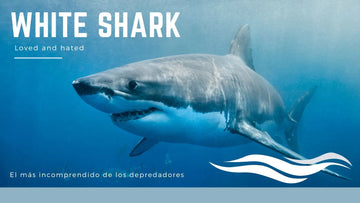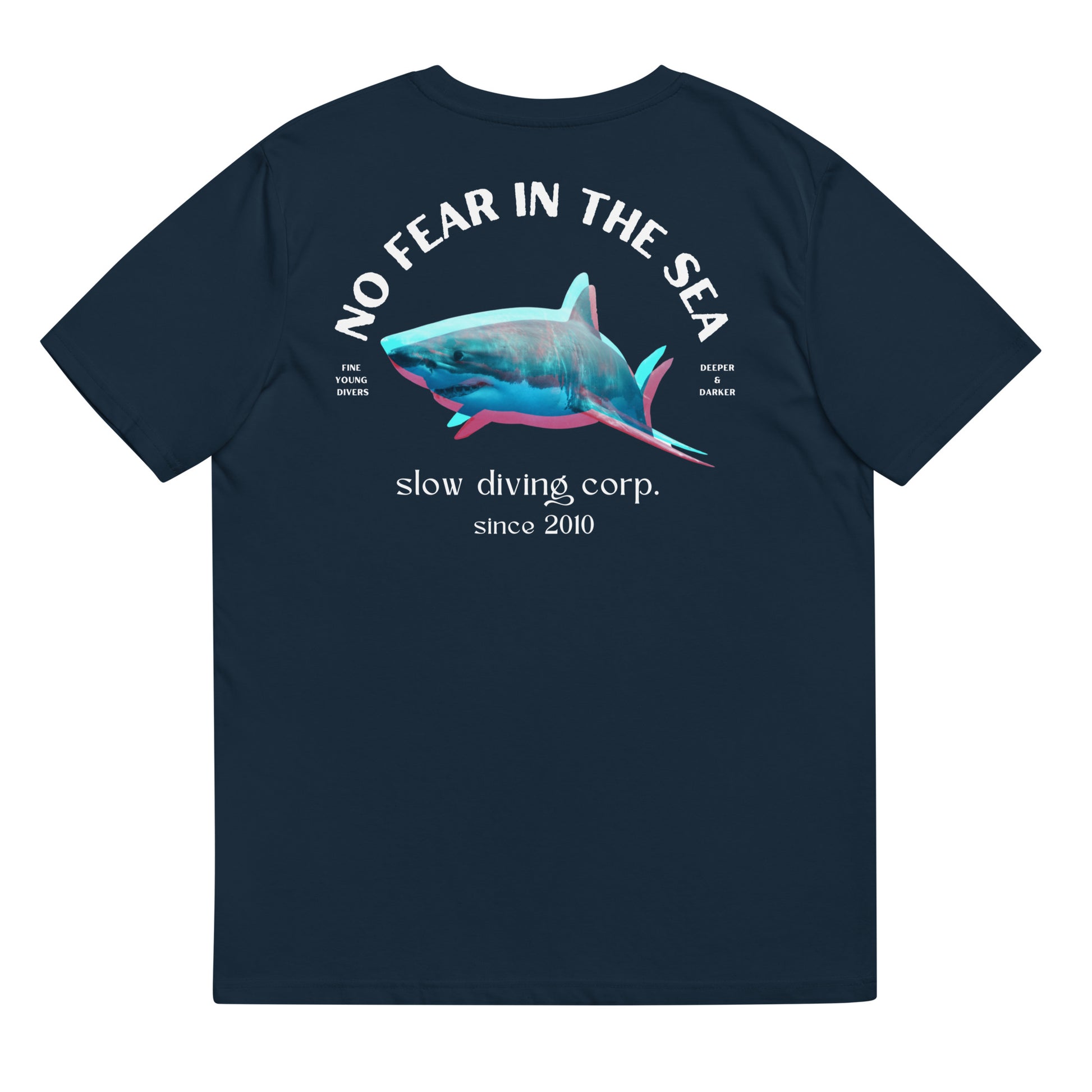The white shark (Carcharodon charcharias) is a shark species of the Lamnidae family, the only on from the Carcharodon genus that we can still find in our seas and oceans.
This large predator can grow up to 20 feet and weight more than two tons. The image of humans killers that we have associated with this animal is much more a horror tale, fostered by the movie “Jaws” by Steven Spielberg, than reality. Only one third of the 100 shark attacks that happen each year can be attributed to great whites sharks and most of them are non fatal.
White sharks get their common name from the color of its belly, completely white like most sharks. Its dorsal fin is gray with blue tones. Its mouth, arched, is one of its defining characteristics as it is always open because it needs to maintain a continuous flow of water to breathe and stay afloat. It contains up to 300 teeth in several rows always visible through its mouth, giving away that terrible image of human killing machine.
T-shirts for Great White Shark Lovers
SEE MORE SHARK T-SHIRTS AND HOODIES
The fearsome mouth of the great white shark can hold up to 300 teeth
The great white shark uses its powerful tail fin to reach high speeds of up to 24 km per hour (15 miles/h) which allow them to use a very effective hunting technique. From depths of several meters they surprise their preys on the surface, biting at really high speed and even jumping several meters out of the sea surface.
White sharks have survived in the oceans for more than 400 million years. One of their main advantages is their exceptional sense of smell that can detect prey from kilometers away. Another are the "ampullae of Lorenzini", which are organs that can detect electromagnetic fields generated by other animals. Their main prey are sea lions, seals, small whales, sea turtles, and sometimes they can also feed on carrion.
The white shark inhabits coastal cold waters always looking for food laden currents that attract prey, including the Mediterranean sea, where the white shark enters in search of bluefin tuna. The areas where the great white is found in higher concentrations are: Sea of Cortez and Guadalupe Island in Mexico, Florida, Cuba and the U.S. East Coast, Pacific archipelagos as Hawaii, Fiji and New Caledonia, Australia, Tasmania and New Zealand, northern Philippines, Seychelles, Maldives and South Africa.
Because of its large distribution there is no reliable data on the white shark population but scientists agree that their number is declining fast due to overfishing and bycatch. Today it is considered an endangered species.
White sharks, due to their size, do not have many natural predators. Only killer whales dare hunting these animals, but just targeting the youngest specimens.
Want to know more? Don't miss our article on myths and facts about great white sharks.























